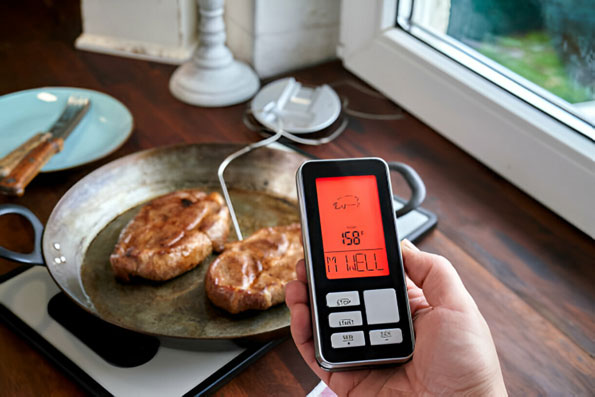There’s something wholesome about gathering around the dining table, sharing laughter, stories, and plates full of carefully prepared meals. But what happens when the quality of those meals is compromised? What about the unfortunate occasions when a seemingly innocuous sandwich or a delectable slice of cake leads to a night of discomfort or even a serious illness? It’s a thought none of us would want to entertain, and yet, foodborne illnesses remain a persistent issue globally. This blog delves deep into how maintaining adequate food temperatures can play a significant role in reducing foodborne diseases.
Food safety, a topic frequently discussed yet often misunderstood, has various facets. One critical aspect ignored frequently is food temperature control. Monitoring food temperatures isn’t merely a necessity for quality assurance, but a vital practice for sustaining health and capitalizing on our food’s nutritional value. If neglected, the risks of foodborne illnesses increase significantly.
So, what is food temperature monitoring, and why is it crucial in the risk minimization of foodborne diseases? Let’s dwell on better understanding its importance, the nuisances of maintaining proper food temperature, and consider whether we are doing enough in this regard.
Table of Contents
Understanding Food Temperature Monitoring
Food temperature monitoring is a preventive food safety practice that ensures your food remains within safe temperature ranges. This involves monitoring both cold and hot foods – from production, and storage, to final serving.
Different foods demand different temperature conditions for safety. For instance, perishable foods like meats, dairy, and certain vegetables require refrigeration to prevent harmful bacterial growth. Simultaneously, hot foods need to be kept adequately warm, failing to do so can pose similar risks.
This concept may seem relatively straightforward, but its implementation extends far beyond home kitchens; it’s intrinsic across all steps of the food supply chain, from farmers to distributors, retailers, restaurants, and beyond.
The Consequences of Ignoring Temperature Monitoring
When food temperature isn’t appropriately maintained, we create an environment conducive for harmful bacteria to thrive. These microorganisms can lead to foodborne diseases, causing anything from mild stomach discomfort to more severe health concerns such as gastroenteritis, salmonellosis, and even food poisoning.
Ignoring food temperature potentially means wasted food and economic loss. Food retailers can find themselves facing legal and financial penalties if found negligent in maintaining adequate food temperatures. More gravely is the damage to their brand image and loss of consumer trust.
Temperature neglect also influences the food’s taste, texture, and nutritional value, compromising on the culinary experience one hopes to offer and enjoy.
The Part of Innovation in Nourishment Temperature Management
With advancements in technology, food temperature management has evolved significantly. Thermometers, thermocouples, and advanced temperature data loggers are modern equipment available to both businesses and consumers.
These instruments give precise readings, decrease human blunders, and guarantee administrative compliance. Automated monitoring systems even offer real-time alerts, ensuring businesses can promptly act to mitigate health risks and food spoilage.
As technology continues to evolve, it sets a higher standard for food safety, pushing the demand for skilled handling and understanding of these tools.
Pros and Cons of Food Temperature Monitoring
Like any process, food temperature monitoring brings forth advantages and a few drawbacks. On the plus side, it ensures food safety, minimizes health risks, reduces food wastage, and plays a significant role in maintaining the quality of food.
However, the practice needs investment in temperature monitoring tools, which can be costly for some, especially for small businesses and households. It also requires consistent attention and proper training for accurate implementation- which can pose a challenge in the hustle and bustle of our daily lives.
The Need for Widespread Temperature Monitoring Awareness
Despite the evidence supporting temperature monitoring, a considerable percentage of food-related businesses and homes still don’t monitor their food temperatures adequately. This lack of widespread implementation and understanding leaves room for foodborne illnesses to continue to be a pertinent issue.
There’s a need for educational initiatives and campaigns to bring awareness to this forefront. This could take the form of training sessions for food businesses, informative content, or even temperature monitoring lessons incorporated into school curriculums.
Conclusion
Food temperature monitoring undoubtedly plays an instrumental role in combating foodborne diseases. It is a preventive measure connecting the dots between quality assurance, health, nutrition, and responsible consumption.
However, its importance is undermined, causing a lapse in safety. Therefore, it is essential that we, as consumers, food businesses, and regulatory bodies, together realize its significance and incorporate it into our daily lives, bringing about a positive change in our approach towards food safety.
In an era with rapid technological advancements and the increasing demand for quality foods, ignoring food temperature monitoring is not an option; instead, it’s a call to action. Let’s fight foodborne diseases one temperature check at a time.

